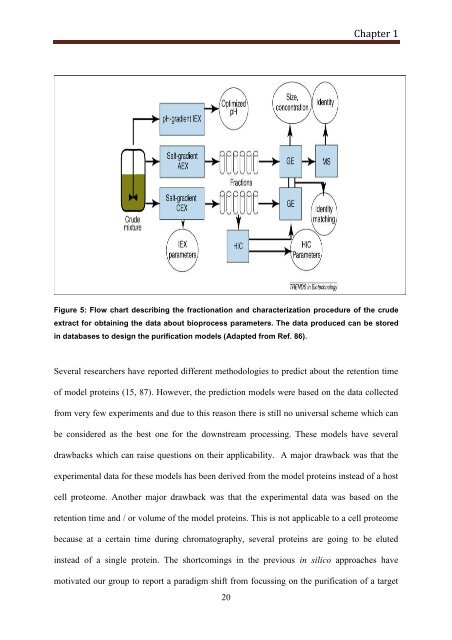Thesis final - after defense-7 - Jacobs University
Thesis final - after defense-7 - Jacobs University
Thesis final - after defense-7 - Jacobs University
You also want an ePaper? Increase the reach of your titles
YUMPU automatically turns print PDFs into web optimized ePapers that Google loves.
Chapter 1<br />
Figure 5: Flow chart describing the fractionation and characterization procedure of the crude<br />
extract for obtaining the data about bioprocess parameters. The data produced can be stored<br />
in databases to design the purification models (Adapted from Ref. 86).<br />
Several researchers have reported different methodologies to predict about the retention time<br />
of model proteins (15, 87). However, the prediction models were based on the data collected<br />
from very few experiments and due to this reason there is still no universal scheme which can<br />
be considered as the best one for the downstream processing. These models have several<br />
drawbacks which can raise questions on their applicability. A major drawback was that the<br />
experimental data for these models has been derived from the model proteins instead of a host<br />
cell proteome. Another major drawback was that the experimental data was based on the<br />
retention time and / or volume of the model proteins. This is not applicable to a cell proteome<br />
because at a certain time during chromatography, several proteins are going to be eluted<br />
instead of a single protein. The shortcomings in the previous in silico approaches have<br />
motivated our group to report a paradigm shift from focussing on the purification of a target<br />
20

















